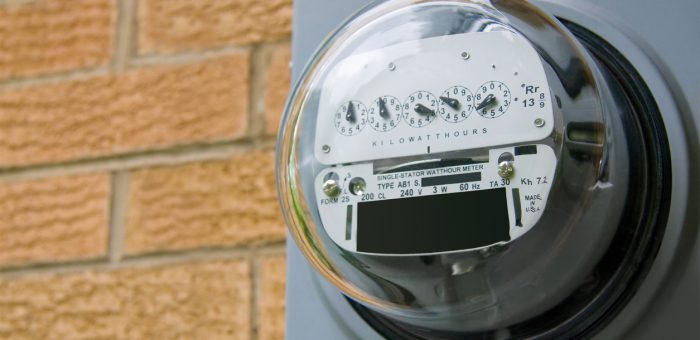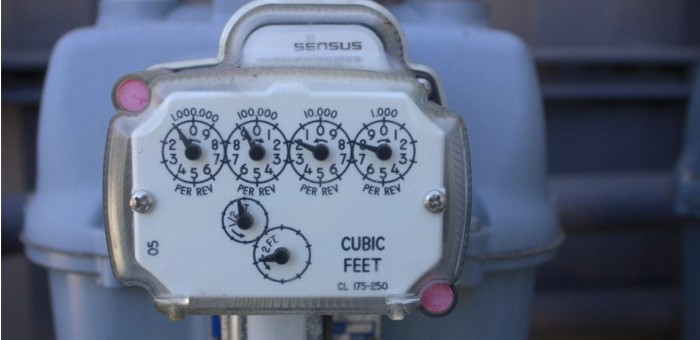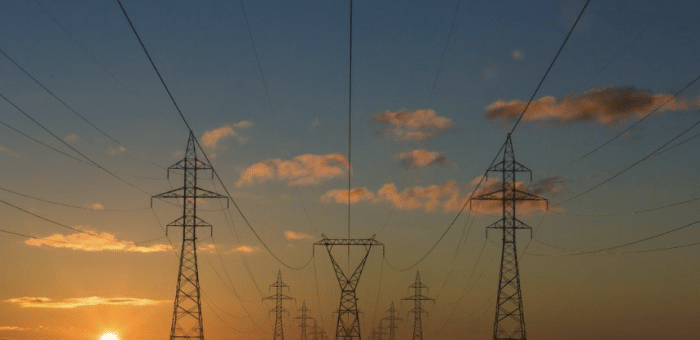If you’re interested in learning more about the average electric bill by square foot, you’re probably looking for a new electricity plan. You’ve probably got a couple of browser tabs open and are trying to figure out the real costs of certain plans so that you can compare them all manually.
Manually shopping for electricity in the deregulated market of Texas is the fastest way to headaches and confusion. By the time you’ve delved into the industry terminology and marketing schemes, you won’t know what you’re looking for, and then you’ll be tempted to just settle for whatever plan happens to be there.
Click on a section to skip directly to it:
Why It’s Important to Estimate Your Electric Bill in Texas.
There are several reasons why you may want to estimate your electricity bill in Texas.
Maybe you are…
- Moving to a larger home or new city in Texas
- Living on a fixed income and need to budget accordingly
- Wondering if you’re paying more than you should be
- Relocating to Texas from another state
Whatever your reason, it is possible to estimate your monthly electric bill in Texas using the square footage of your home.
This guide has been designed to:
- Provide estimates for electric bills in Texas by the square foot
- Help you calculate an estimated electric bill for your home
- Discuss factors that can impact your monthly bill
- Review energy consumption in Texas and variables that affect consumption
- Show you how to choose an electricity provider and plan that works for your square footage
Average Electric Bill by Square Foot in Texas
One of the biggest determining factors in how much energy your family will use is the size of your home.
Unless your home uses solar panels (or some other form of ‘green’ energy) to power your lights and appliances, it is generally accepted that the larger your home is, the higher your electric bill will be.
There are over 100 Retail Electric Providers operating in Texas. Each provider offers multiple types of electricity plans and accompanying rates.
This can make it difficult to predict the dollar amount of the average electric bill in Texas.
Using the average square footage of homes in each of Texas’ six largest cities, and the average energy consumption of consumers in those cities, we can ESTIMATE average electric bills in Texas by square foot:
Average Electric Bills in Texas
| Sq Footage | Texas (overall) | Houston | Dallas | Fort Worth | Austin | El Paso | San Antonio |
| 500 | $36.59 | $34.07 | $55.67 | $46.30 | $25.24 | $23.21 | $24.81 |
| 1000 | $73.17 | $68.14 | $111.33 | $92.60 | $50.48 | $46.43 | $49.62 |
| 1500 | $109.76 | $102.20 | $167.00 | $138.90 | $75.73 | $69.64 | $74.43 |
| 1800 | $131.71 | $122.65 | $200.40 | $166.68 | $90.87 | $83.57 | $89.32 |
| 2000 | $146.35 | $136.27 | $222.66 | $185.20 | $100.97 | $92.86 | $99.24 |
| 2300 | $168.30 | $156.71 | $256.06 | $212.99 | $116.11 | $106.79 | $114.13 |
| 2500 | $182.93 | $170.34 | $278.33 | $231.51 | $126.21 | $116.07 | $124.05 |
| 3000 | $219.52 | $204.41 | $334.00 | $277.81 | $151.45 | $139.29 | $148.86 |
| 3500 | $256.11 | $238.48 | $389.66 | $324.11 | $176.69 | $162.50 | $173.67 |
| 4000 | $292.69 | $272.55 | $445.33 | $370.41 | $201.93 | $185.72 | $198.48 |
*These projected electricity bills are ESTIMATED using the average square footage and energy consumption of homes in Texas overall and in various Texas cities.
Knowing the Average Electric Bill in Texas Before You Relocate or Move.
The average electric bill in Texas is higher than in other states. One of the main culprits is the sweltering summer heat that forces Texans to crank up the A/C.
Additionally, Texas has one of the highest relocation rates in the U.S. If you’re planning to buy a home in the Lone Star state, it’s essential to keep the cost of your electric bills down.
Now that you’ve learned the importance of estimating your electric bill and reviewed the average electric bill by square footage in Texas, you can find out the average electric bill in Texas’ largest cities utilizing a chart of average square footage.
The Million-Dollar Question: How Much Will My Electric Bill Be in Texas?

Based on the table above, you can get a general idea of how much your electricity bill might be in Texas.
What if you live in a city that is not included in the table?
Let’s use the Reed Family as an example.
The Reeds are contemplating buying a 2,400 square foot house in Wichita Falls, TX. They currently live in a 1,100 square foot home and are concerned about a possible jump in their monthly electric bill in a significantly larger home.
In order to estimate their monthly electric bill, they need to find three key pieces of information:
- Average square footage of homes in Wichita Falls
- Average electricity rate in Wichita Falls
- The average energy use of households in Wichita Falls
All of this information can typically be found with a few Google searches.
Let’s say that Mrs. Reed has been able to determine the following (these are fictional numbers for the sake of our story):
- Avg sq ft = 1,875
- Avg energy consumption = 950 kWh per month
- Avg electricity rate = .1044/kWh
Mrs. Reed can use the following formula to determine price per square foot for electricity in Wichita Falls:
(avg. consumption x avg. rate) / avg sq ft = price per square foot
(950 x .1044) / 1875 = .053
Now, Mrs. Reed can use her calculated price per square foot to ESTIMATE a monthly electric bill for her 2,400sq ft home:
.053 x 2400 = $126.95
It is important to remember that these calculations can only be used as estimates, and there are factors in addition to your rate/kWh that can affect your electric bill. We’ll review these later.
[ctafirst]
A Brief Review of Average Electric Bills by Square Foot in Texas
The following average monthly electric bills by square footage in Texas are ESTIMATES based on:
- An average Texas home size of 1800sq ft
- An average Texas electricity rate of 11.2¢ per kWh
- An average Texas household’s electricity consumption of 1176 kWh per month
Average Electric Bill: 500 Sq Ft Home in Texas
The average monthly electric bill for a 500sq ft home in Texas is $36.59.
Average Electric Bill: 1000 Square Foot Home in Texas
The average monthly electric bill for a 1000sq ft home in Texas is $73.17.
Average Electric Bill: 1500 Square Foot Home in Texas
The average monthly electric bill for a 1500sq ft home in Texas is $109.76.
Average Electric Bill for 1800 Sq Ft Home in Texas
The average monthly electric bill for a 1800sq ft home in Texas is $131.71.
Average Electric Bill: 2000 Square Foot House in Texas
The average monthly electric bill for a 2000sq ft home in Texas is $146.35.
Average Electric Bill for 2300 Sq Ft Home in Texas
The average monthly electric bill for a 2300sq ft home in Texas is $168.30
Average Electric Bill for 2500 Sq Ft House in Texas
The average monthly electric bill for a 2500sq ft home in Texas is $182.93.
Average Electric Bill: 3000 Sq Ft House in Texas
The average monthly electric bill for a 3000sq ft home in Texas is $219.52.
Average Electric Bill: 3500 Square Foot House Texas
The average monthly electric bill for a 3500sq ft home in Texas is $256.11.
Average Electric Bill 4000: Square Foot House in Texas
The average monthly electric bill for a 4000sq ft home in Texas is $292.69.
Additional Factors That Might Affect Your Electric Bill
The square footage of your home and the rate you pay per kWh are not the only factors that will affect your monthly electric bill.
To get a true picture of what your Texas electric bill might look like, you’ll also need to research:
- Fees charged by the retail electric provider you choose
- Your location
- Available plan types in your area
Using your square footage is a simple part of the process of estimating a future electric bill.
But researching these other factors will take a lot more time, patience, and caffeine.
Fees Charged by Your Electric Provider
The fees your Retail Electric Provider adds to your monthly bill can have a significant impact on your annual energy costs.
There are several approved fees you might see on your bill, and it is important to ask your provider about them before committing to a plan.
Here are just a few examples of additional fees:
- Fixed charge (also known as a base charge)
- Minimum usage fee
- Discretionary service charges
- Surcharges
- Delivery charges
- Connection fees
- Energy efficiency cost recovery fees
Your Location
Where you live in Texas will play a huge role in your monthly electric bill.
- Deregulated area (85% of the state) vs. regulated area. There’s no strict answer as to which is more expensive b. In deregulated areas: you play a role in choosing your rate and plan – which will directly affect your bill
- Urban areas vs. small towns
a. Demand for electricity in urban areas can increase the market price of electricity
Your Plan Type
What kind of electricity plan do you have?
If you live in a deregulated area of Texas, you likely have several options – all of which affect the rate you pay per kWh
Here is a brief overview of a few electricity plan types:
1. Fixed-rate Plan
a. The rate you agree to at the start of your contract remains the same for the entire length of your contract
2. Variable-rate Plan
a. Your rate can fluctuate monthly based on the market rate of electricity in your area
- Save when the market is low but pay more when market rates are high
3. Prepaid Plan
a. Purchase your electricity in advance
Monitor your usage ‘bank’ and purchase more electricity as your ‘bank’ depletes
b. Rates can be fixed or variable
[ctafirst]
Average Electricity Usage in Texas by Square Foot
According to the U.S. Energy Information Administration, “The average U.S. household consumes about 11,000 kilowatt-hours (kWh) [of electricity] per year.”
How does Texas compare to the rest of the U.S.?
Using the average square footage of homes in each of Texas’ largest cities and the average energy consumption of consumers in those cities, we can ESTIMATE the projected monthly electricity usage for homes of all sizes in Texas:
Average Energy Usage in Texas – kWh per month
| Sq Footage | Texas (overall) | Houston | Dallas | Fort Worth | Austin | El Paso | San Antonio |
| 500 | 327 | 310 | 507 | 422 | 242 | 209 | 269 |
| 1000 | 653 | 621 | 1014 | 843 | 484 | 418 | 537 |
| 1500 | 980 | 931 | 1521 | 1265 | 725 | 627 | 806 |
| 1800 | 1176 | 1117 | 1825 | 1518 | 870 | 752 | 967 |
| 2000 | 1307 | 1241 | 2028 | 1687 | 967 | 836 | 1074 |
| 2300 | 1503 | 1427 | 2332 | 1940 | 1112 | 961 | 1235 |
| 2500 | 1633 | 1551 | 2535 | 2108 | 1209 | 1045 | 1343 |
| 3000 | 1960 | 1862 | 3042 | 2530 | 1451 | 1254 | 1611 |
| 3500 | 2287 | 2172 | 3549 | 2952 | 1692 | 1463 | 1880 |
| 4000 | 2613 | 2482 | 4056 | 3373 | 1934 | 1672 | 2148 |
These numbers are only estimates, and accuracy is not guaranteed. But they can be used to help approximate your monthly electric bill while you’re comparing available electricity plans in your area.
The size of your home is not the only element that affects energy usage in your household. Let’s look at a few other components.
Every Household is Unique
Every home, family, and lifestyle is unique. The variables that can affect energy usage are innumerable.
In addition to appliance use and lighting in your home, a few of the largest variables are:
- Energy sources in your home
- Number of occupants in your home
- Age of your home
- Design of your home
We’ll briefly discuss how each of these factors can affect your energy usage and in turn, your monthly bill.
Energy Source(s)
Many homes in Texas use both electricity and natural gas. The energy source required to power your most ‘energy-hungry ’ appliances will be a big player in your energy usage.
For example, let’s say you and your neighbor both live in 2,000sq ft homes. Your furnace and clothes dryer is powered by natural gas, while your neighbor’s are electric.
Your appliance-based electricity usage will likely be lower than your neighbor’s, which will be reflected on your monthly bill.
So, even though you live in the same neighborhood, in similar homes, your electricity bills will be different.
Number of Occupants
The number of occupants in your home and how they spend their time is a major contributor to electricity usage.
Think about everything you and your family do in your home that consumes electricity:
- Watching T.V. and movies
- Playing video games
- Working on a computer
- Charging devices
- Doing laundry
- Cooking
The more people who live in your home, the more laundry there is. More devices to charge, etc.
Age of Your Home
How does the age of a home affect energy usage?
An older home may have inadequate or deteriorated insulation – requiring HVAC systems to work harder to keep the home warm or cool.
Newer homes may have energy-efficient appliances – which consume less energy, and fully-sealed windows – which help maintain the set temperature in your home.
Home Design
The design of your home matters too:
- Multi-story homes may be hotter upstairs and require your A.C. to run for an extended time.
- Multi-story homes might have dual-zone systems that isolate spaces, allowing your HVAC system to use less energy.
- Homes with deep crawl spaces might lead to drafty living spaces.
The list can go on and on.
[ctafirst]
Are You Paying Too Much? Are You Asking “How Much Should My Electric Bill Be?”

The electricity market in Texas is hard to follow and even harder to understand.
Electric bills can be very high.
Retail Electric Providers are plentiful – as are their multitude of plan choices. It can be very difficult to know if you’re in the best plan for your unique needs.
Deciding to research your options can be a difficult decision to make because you KNOW how much work it’s going to be.
How to Find an Electric Plan that Works for Your Square Footage
It is possible to find an electricity plan that works for your square footage and other specific usage needs.
You can do it on your own. We won’t tell you that going this route is easy. Or quick. Because…it’s just not.
You can use a electricity comparison site like Power Wizard.
Let’s review both options in detail.
Method 1: Manually Research REPs in Your Area
If you decide to tackle this project on your own, you’ll first need to spend hours, or even days, researching all the REPs in your area.
You can do this while hunched over your laptop or tablet. Or you can make never-ending phone calls.
Either way, you’ll need to be thorough. Find out:
- What types of plans each REP offers
- What the rates are for each of those plans
- What fees will be added to your monthly bill
- What the contract length will be
- What promotional incentives are offered
Don’t skip a company. Research every single one. You never know what you might miss if you decide to cut your research short.
Now, Compile Your Findings
Design a comprehensive spreadsheet to compile all the REP information you gather during your research phase.
All the columns. All the rows. The headers. The formulas. It will be a thing of beauty when you’re done…if you ever finish.
Spend Days or Weeks Comparing Plans and Rates to Your Specific Needs
What are your specific electricity usage needs? Do you:
- Watch a lot of T.V.?
- Spend time gaming?
- Wash 13 loads of laundry every week?
- Spend your weekends away from home?
- Work from a home office?
- Sleep during the day because you work the night shift?
You’ll need to take all sorts of factors into consideration when comparing your needs to that spreadsheet of details you meticulously created.
Method 2: Use a Comparison Site
Instead of spending a ridiculous amount of time trying to researching each energy company and looking into the electricity plans they offer, why not spend five or ten minutes looking at all of that in one place?
Enter a few key pieces of information and let Power Wizard technology do all the work for you.
How Can Power Wizard Help You Get the Most out of Your Square Footage?
Power Wizard can help save money and time by facilitating all the the research, allowing you to compare rates and energy companies in one place.
More From the Power Wizard Blog
-
Affordable Electric Bill: Power Wizard’s Promise of Protection
Sarah, a proud Texan, knows that everything is bigger in Texas – including the choices when it comes to electricity providers. She’s no stranger to the complexities of deregulated energy markets. With a bustling household, she juggles work, family, and keeping the lights on. But there’s one thing Sarah doesn’t want to juggle: her electric bill. […]
View Article -
Vampire Energy: How Phantom Power Drains Your Wallet and the Environment
Imagine your home filled with silent energy sippers, lurking in the shadows, unnoticed yet constantly draining power and your wallet. Vampire energy, or phantom load, refers to the electricity electronic devices consume, even when turned off or in standby mode. These energy vampires are prevalent in every household and workplace, from the charger left plugged […]
View Article -
Do Solar Panels Increase Home Value?
The United States now has more than 6,000 people who work in the solar power industry and help us enjoy the benefits of this amazing technology. As solar panels become more and more common, some people are wondering, “Do solar panels increase home value estimates?” The truth is that solar panels can provide a long list of […]
View Article -
What Is Net Metering and How Does It Work?
A staggering 1300% increase. That’s how much the number of electric customers engaging in net metering skyrocketed from 2010 to 2020. But what is behind this surge? What exactly is net metering, and how could it potentially change the way you view your electricity consumption? The journey from an ordinary consumer to a potentially profitable one […]
View Article -
The Top Sources of Carbon Emissions in the U.S.
Climate change due to rising global temperature seriously threatens the natural ecosystem. It can result in erratic weather featuring intense drought, heat waves, melting ice caps, warming oceans, and increased storms when left unchecked. As the impact of climate change worsens, the risk of biodiversity loss and human extinction gets bigger. Table of Contents What […]
View Article -
California Solar Tax Credit & Incentives for Residential Rooftop Solar
Are you considering investing in residential solar panels in California? You’re not the only one. Research shows that California was ranked number one out of 50 states in 2022 for solar power generation, with more than 11 million homes powered by the sun. A major reason why solar power is popular statewide is that prices have dropped […]
View Article -
What Should You Include in an Energy Efficiency Audit?
Rising energy costs mean higher electricity bills, and for the average homeowner or business, a little savings each month can add up to extra cash at the end of the year. If you’re looking for ways to reduce your home’s energy consumption, performing a home energy audit is a great place to start. Table of […]
View Article -
How to Cancel Your Electricity Contract with Your Provider
There are many advantages to changing your electrical service, including finding a better price, switching to a company with better customer service, and finding a distributor with a green appeal. It’s easiest to end your service when a contract ends, but sometimes it makes sense to switch early. For instance, you may find that you’re […]
View Article














